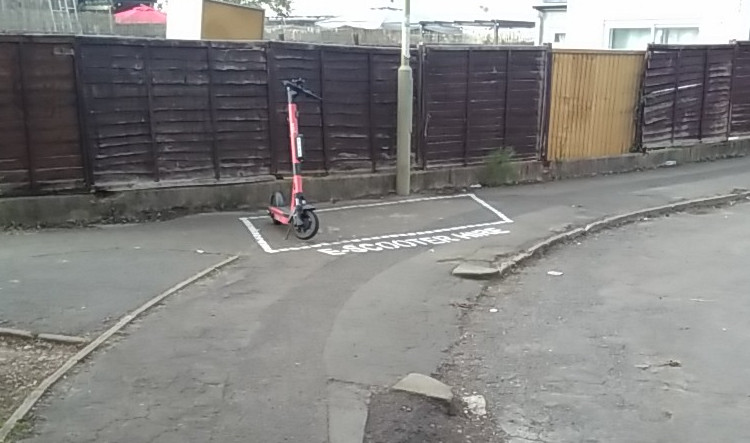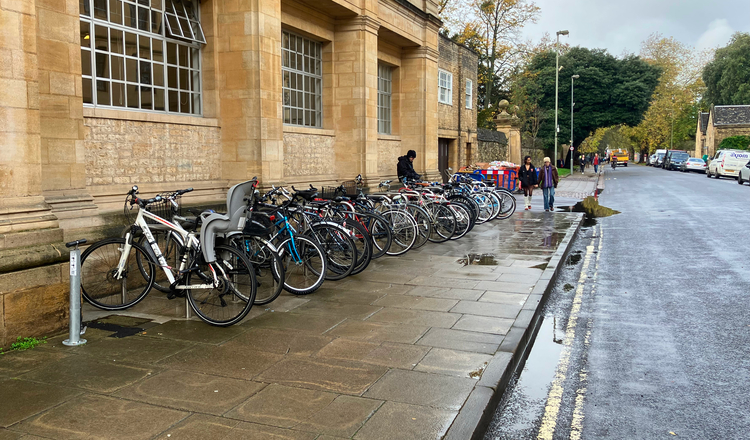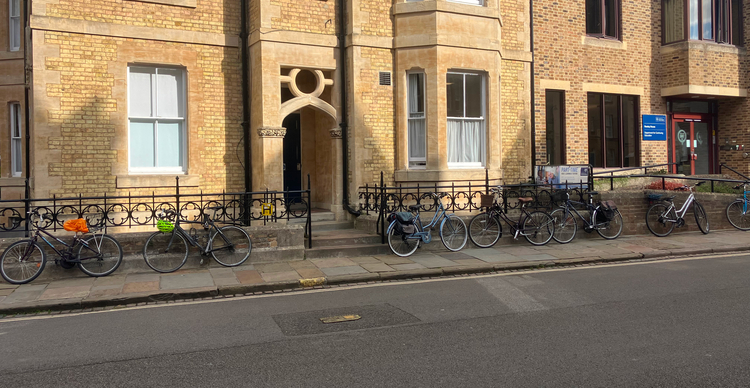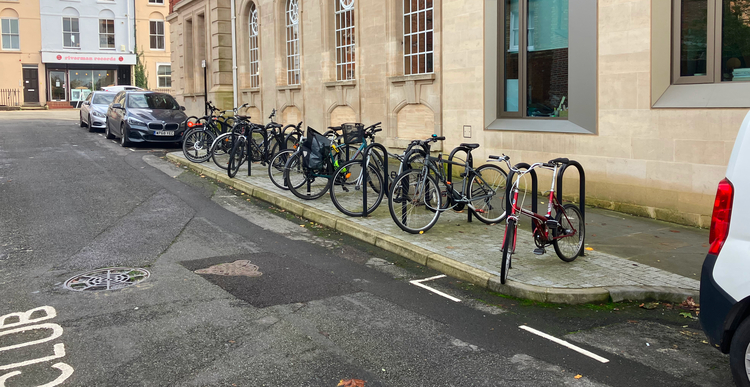Wherever possible, space for cycle or scooter parking should be taken from car parking space or spare carriageway space, not from footways or space for pedestrians. Pedestrians are at the very top of the transport hierarchy and private cars at the very bottom.

Cycle/scooter parking should be at carriageway level (or at cycle track level if that's different) rather than at footway level. Cycles and scooters are supposed to be ridden on the road (or on separate cycle tracks), but putting parking for them on the footway encourages people to cycle or scoot there in order to access the parking.

If access to cycle parking is across a footway, dropped kerbs should be put in to provide direct access to it (just as is done for driveways or off-street car parking). If the nearest dropped kerb is twenty metres away, some people will use that access and then cycle or scoot on the footway to reach the parking. There are also some people who can't easily lift cycles up a full kerb to access parking: disabled people with adapted cycles, older people with heavy e-bikes or tricycles, parents or carers with tandems or trailers, tradespeople with heavy loads in cargo bikes, and so forth. (Note: the footway should remain level, with the dropped kerb implemented using a proper entrance kerb.)

In a few places it may make sense to have cycle parking on a footway, but the footway needs to be wide enough for that not to create difficulties for wheelchair users, people pushing prams, etc. The photo above, of the outside of Continuing Education in St Johns St, illustrates a location in a heritage area, with high peak demand for cycle parking, where using the existing fence avoids the need for unsightly additional cycle stands that would go unused most of the time. The footways here are currently 2 metres wide and could easily be widened to 2.5m or even 2.75m on both sides of the street (the carriageway is currently 8.5m across, there is little traffic here, and Wellington Square provides turning for larger vehicles).

This photo from Jericho (on Worcester Place, inside the LTN area) illustrates how backwards our approach to this has been. Some trouble (and expense) has been gone to here to build out the pavement so cycle parking can be put on it - but now the logical thing for anyone wanting to use this parking is to come off the road at the junction with Walton St and cycle on the footway to reach it. And anyone doing the right thing and accessing the parking from the carriageway is faced with a kerb.
Part of the problem is lack of coordination. A lot of cycle parking is put in by the city council, or mandated by them as part of new developments, but that appears to be uncoordinated with the county council, which manages the highways. And different parts of the county don't always talk to one another: the Active Travel team and the Parking team, for example.
